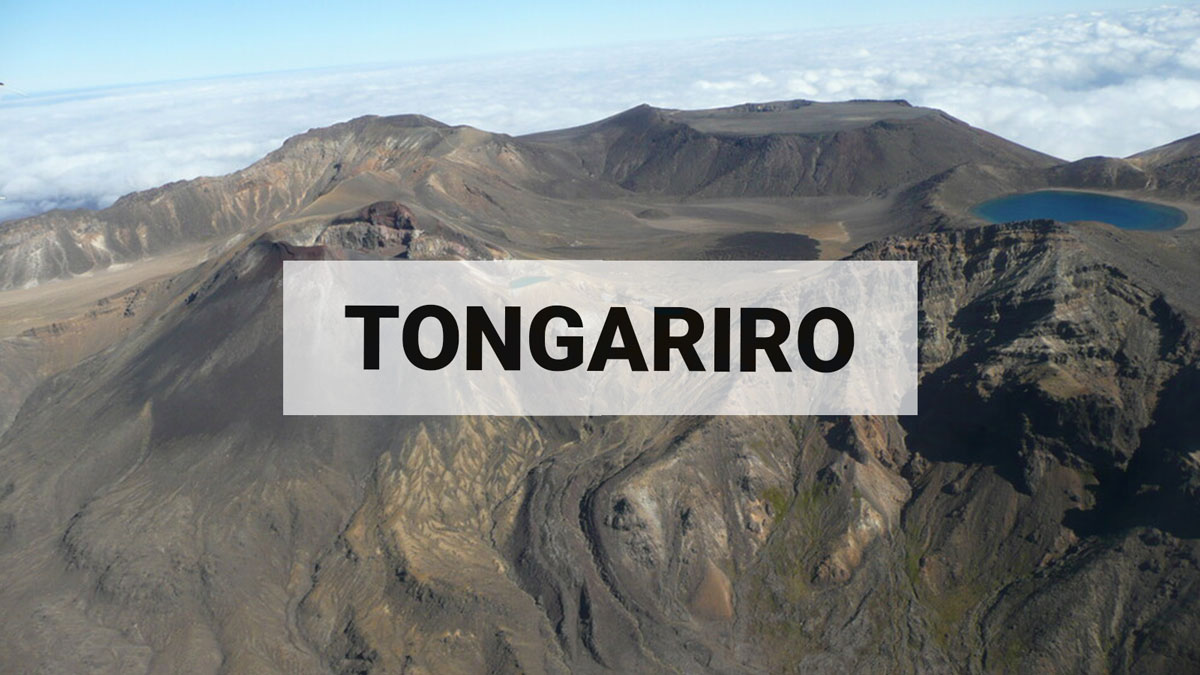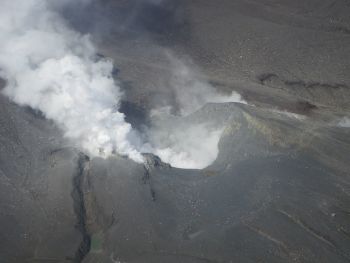
Volcanic Alert Bulletin TON-2013/01 - Tongariro Volcano
Te Maari craters at Mount Tongariro, the site of eruptions in August and November 2012, continue to be active with continuous emissions of steam and volcanic gas. Emission of a steam and gas plume has been a continuous feature of the mountain since the August 2012 eruption. The gas is coming from a large fumarole and crack in a cliff just east of the Upper Te Maari crater.
The main Upper Te Maari crater is also discharging gas but at a lesser rate. Fumaroles associated with a fissure farther to the east have declined and are no longer easily visible. Volcanic gas from the plume may continue to be smelt in areas downwind of the volcano. GNS Science volcanologists will be making gas measurements at the next available opportunity to compare to those made at the end of December 2012, however recent visual observations show that the emissions are on-going and sustained. Observers of the mountain may notice that emissions appear to be stronger on some days than others, which is due to a combination of variability in the degassing rate and atmospheric conditions which make the plume more visible on some days. GNS head volcanologist Gill Jolly said “gas and steam emissions from the volcano will continue to be a feature of the mountain for several years to come.” Aerial observations at the end of 2012 showed that a large amount of material had in-filled the Upper Te Maari crater as part of the 21 November 2012 eruption, however the main shape of the crater had not changed. Seismicity has remained relatively low with no earthquakes yet recorded beneath the mountain in 2013. Tongariro continues to be in a heightened state of unrest and eruptions could occur with little or no precursors. The Volcano Alert Level remains at 1 and the Aviation Colour Code remains at Yellow. Background The Volcanic Alert Level ranges from 0 to 5 and defines the current status at a volcano. Level 1 indicates volcanic unrest, with departures from background levels. Aviation Colour Codes are based on four colours and are intended for quick reference only in the international civil aviation community. Code Yellow indicates that volcanic activity has decreased significantly (since the last eruption) but continues to be closely monitored. Craig Miller, Brad Scott Volcanologists
